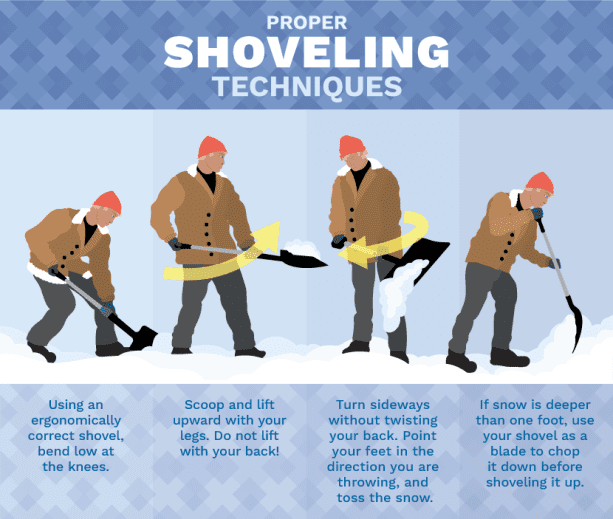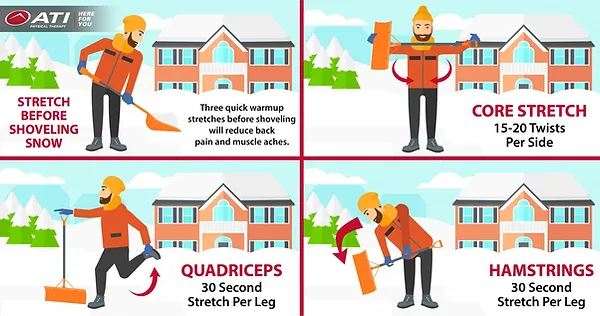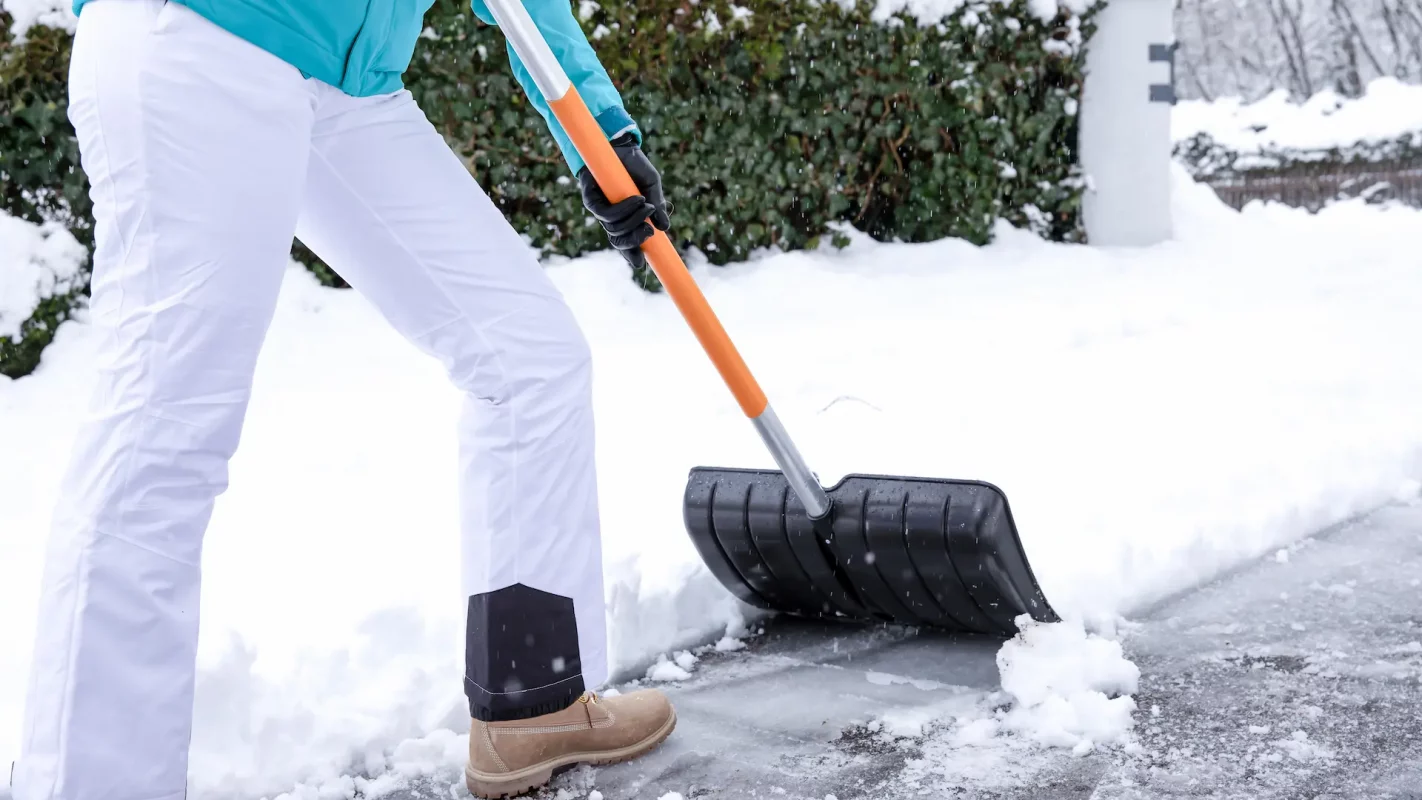As winter blankets our surroundings with snow, the daunting task of shoveling becomes a necessity for many. However, this seemingly mundane chore can pose significant risks of injury, particularly to the back. To ensure a safe and pain-free shoveling experience, it’s essential to implement expert tips to prevent injury, incorporate pre and post-shoveling stretches, and know how to address discomfort should it arise for shoveling safely.
Expert Tips to Avoid Injury While Shoveling:
- Warm Up: Before grabbing your shovel, take a few minutes to warm up your muscles with light aerobic exercises like walking or gentle jogging. This prepares your body for the physical demands of shoveling and reduces the risk of strain.
- Choose the Right Shovel: Opt for an ergonomic shovel with a curved handle and lightweight design to minimize strain on your back and joints. Ensure the shovel blade is sharp to make shoveling easier and more efficient.
- Use Proper Technique: When shoveling, bend your knees and lift with your legs rather than your back. Keep your back straight, and avoid twisting motions, which can strain your spine and lead to injury.
- Pace Yourself: Take frequent breaks to rest and hydrate, especially during prolonged shoveling sessions. Listen to your body’s signals of fatigue or discomfort and stop shoveling if you feel any pain.
- Push, Don’t Lift: Whenever possible, push the snow rather than lifting it to reduce the strain on your back. If lifting is necessary, use your legs to lift, and avoid overloading the shovel with too much snow.

Pre and Post-Shoveling Stretches
Before Shoveling:
- Standing Forward Bend: Stand with feet hip-width apart, bend forward from the hips, and reach towards your toes. Hold for 20-30 seconds to stretch the hamstrings and lower back.
- Side Stretch: Stand with feet hip-width apart, reach your arms overhead, and lean gently to one side, feeling the stretch along the side of your body. Hold for 20-30 seconds, then switch sides.
After Shoveling:
- Child’s Pose: Kneel on the floor, sit back on your heels, and stretch your arms forward, resting your forehead on the ground. Hold for 20-30 seconds to release tension in the back and shoulders.
- Cat-Cow Stretch: Start on your hands and knees, arch your back upwards (like a cat), then release and lift your chest towards the ceiling (like a cow). Repeat 5-10 times to gently mobilize the spine.

What to Do If You Hurt Your Back:
If you experience back pain or discomfort after shoveling, it’s essential to take immediate action to prevent further injury. Here are some steps to follow:
- Rest: Avoid any activities that exacerbate the pain and give your back time to rest and recover.
- Apply Ice: Apply an ice pack to the affected area for 15-20 minutes every few hours to reduce inflammation and alleviate pain.
- Gentle Movement: Engage in gentle movements and stretches to promote blood flow and flexibility in the back muscles.
- Seek Medical Attention: If the pain persists or worsens, consult a healthcare professional for a thorough evaluation and appropriate treatment options.
Shoveling snow can be a demanding task, but with the right precautions and techniques, you can minimize the risk of injury and discomfort. By incorporating expert tips to avoid injury, practicing pre and post-shoveling stretches, and knowing how to address back pain effectively, you can ensure a safe and pain-free shoveling experience throughout the winter months.









